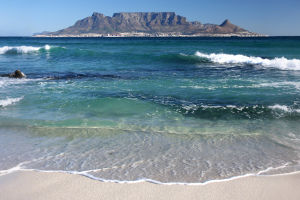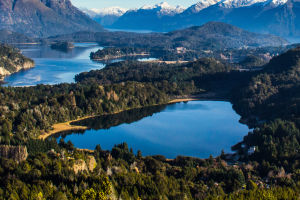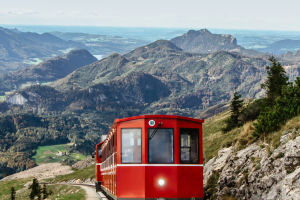Raja Ampat, located in the far west of the island of New Guinea in Indonesia, is a treasure trove for underwater explorers. Known for its untouched beauty and astounding marine diversity, this region is a dream destination for divers.
With warm waters, calm sea conditions, and landscapes straight out of a nature documentary, Raja Ampat offers some of the most rewarding experiences beneath the waves.
For Lykkers looking for adventure, vibrant reefs, and incredible biodiversity, this destination is one of the world’s top underwater escapes.
Where It Is and How to Get There
Location Overview
Raja Ampat lies in Indonesia’s West Papua province, forming part of the “Bird’s Head” Peninsula. The main islands are Waigeo, Batanta, Salawati, and Misool. These sit in the heart of the Coral Triangle, the region recognized as the most biodiverse marine area on Earth.
Getting There
Fly from major Southeast Asian hubs such as Jakarta or Bali to Sorong, the main gateway to Raja Ampat. From Sorong, boat transfers are available to the dive resorts or homestays on the islands.
Expect a combination of flights and sea transport lasting between 8–14 hours, depending on the route. Domestic flight costs from Jakarta to Sorong average around $150–250 USD. Boat transfers can range from $50 to $150 USD per person.
When to Go
The region enjoys relatively stable marine conditions year-round. Rain is frequent but often short-lived, alternating with bright sun. Visibility underwater ranges from 20 to 40 meters, and water temperatures stay between 27–30°C. The best months for diving are October to May.
Top 5 Dive Sites Not to Miss
Cape Kri – Heart of Biodiversity
Located at the eastern tip of Kri Island, Cape Kri boasts one of the highest concentrations of marine species ever recorded. Large schools of trevallies, snappers, and barracudas fill the waters, often joined by reef sharks and other predators.
Strong currents make this spot ideal for experienced divers, and the vibrant coral gardens attract creatures of all sizes.
Sardine Reef – A Living Aquarium
Just off the east side of Kri, Sardine Reef is a breathtaking dive site where dense swarms of fish move in unison. Coral-covered slopes host sponges and soft coral forests teeming with life. Divers can witness the synchronized movements of thousands of fish, with occasional sightings of larger hunters like trevallies and reef sharks. It’s an explosion of motion and color.
Blue Magic – Compact and Colorful
This submerged pinnacle, located 6 km south of Mioskon Island, attracts a stunning array of marine species. Tuna, mackerel, barracudas, and reef sharks gather here in great numbers. During tide changes, the site becomes a gathering point for many types of fish. The pinnacle itself is rich with coral, creating a compact but unforgettable dive environment.
Manta Sandy – Graceful Giants
Near Arborek Island, this dive site is known for encounters with manta rays. These majestic creatures visit cleaning stations on the seabed, where smaller fish remove parasites from their skin. Divers often witness several mantas circling slowly, making it an ideal site for photography and peaceful observation. Best visited during current flow, which brings in plankton-rich waters.
Magic Mountain – Depths of Discovery
Located in the open sea near Misool, Magic Mountain is a submerged reef frequented by larger marine animals. Barracudas, reef sharks, and napoleons are regular visitors. Manta rays are often spotted gliding through the water. This site combines the thrill of big fish encounters with stunning reef formations that rise from the deep.
Diving Costs
- Single Dive (local operator): ~$80–120 USD
- Two-Tank Dive Trip: ~$130–180 USD
- Liveaboard Dives (if included in itinerary): ~$200–400 USD/day
Prices vary by season (peak: Oct–Apr) and operator. Some resorts offer package deals for multiple dives.
Marine Life and Conservation
Unmatched Biodiversity
The region is home to over 1,300 species of reef fish and 600 types of coral. Soft and hard corals form complex ecosystems that provide shelter to countless underwater species. From pygmy seahorses to sea turtles, every dive brings new surprises.
Protected Waters
Since 2013, Raja Ampat’s waters—spanning over 4 million hectares—have been officially designated as a marine sanctuary. Harmful practices, especially those threatening key species, are prohibited. This effort helps safeguard not only the stunning coral landscapes but also animals like dugongs, dolphins, and rays that rely on this delicate environment.
In Summary
Raja Ampat remains one of the last truly untouched diving destinations. For Lykkers seeking unforgettable underwater adventures, few places can rival its richness, tranquility, and variety. The journey may be long, but what awaits beneath the waves is pure magic. With careful planning and respect for nature, visiting Raja Ampat offers not just an adventure, but a glimpse into one of Earth’s most vibrant natural worlds.


